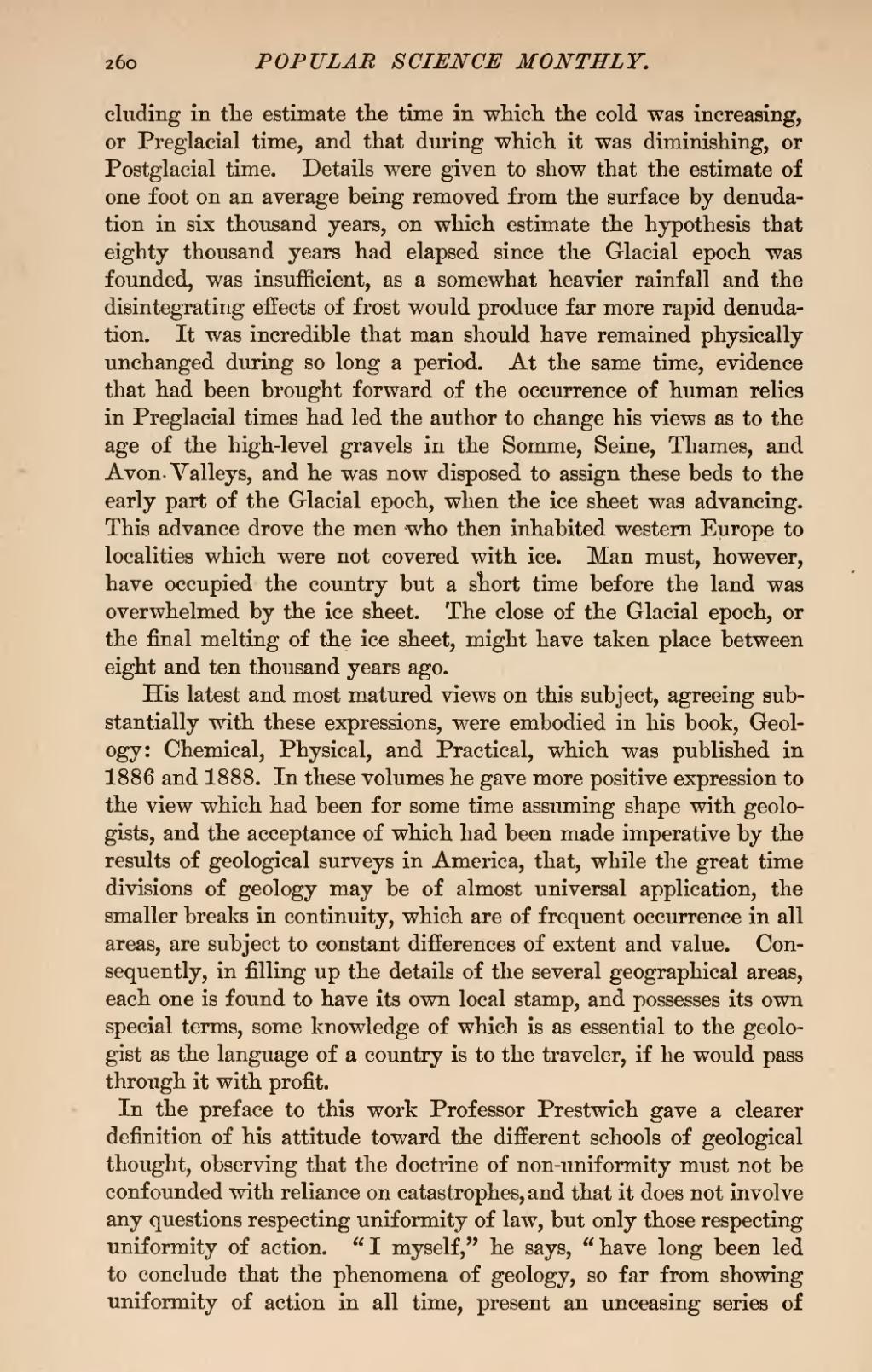cluding in the estimate the time in which the cold was increasing, or Preglacial time, and that during which it was diminishing, or Postglacial time. Details were given to show that the estimate of one foot on an average being removed from the surface by denudation in six thousand years, on which estimate the hypothesis that eighty thousand years had elapsed since the Glacial epoch was founded, was insufficient, as a somewhat heavier rainfall and the disintegrating effects of frost would produce far more rapid denudation. It was incredible that man should have remained physically unchanged during so long a period. At the same time, evidence that had been brought forward of the occurrence of human relics in Preglacial times had led the author to change his views as to the age of the high-level gravels in the Somme, Seine, Thames, and Avon Valleys, and he was now disposed to assign these beds to the early part of the Glacial epoch, when the ice sheet was advancing. This advance drove the men who then inhabited western Europe to localities which were not covered with ice. Man must, however, have occupied the country but a short time before the land was overwhelmed by the ice sheet. The close of the Glacial epoch, or the final melting of the ice sheet, might have taken place between eight and ten thousand years ago.
His latest and most matured views on this subject, agreeing substantially with these expressions, were embodied in his book, Geology: Chemical, Physical, and Practical, which was published in 1886 and 1888. In these volumes he gave more positive expression to the view which had been for some time assuming shape with geologists, and the acceptance of which had been made imperative by the results of geological surveys in America, that, while the great time divisions of geology may be of almost universal application, the smaller breaks in continuity, which are of frequent occurrence in all areas, are subject to constant differences of extent and value. Consequently, in filling up the details of the several geographical areas, each one is found to have its own local stamp, and possesses its own special terms, some knowledge of which is as essential to the geologist as the language of a country is to the traveler, if he would pass through it with profit.
In the preface to this work Professor Prestwich gave a clearer definition of his attitude toward the different schools of geological thought, observing that the doctrine of non-uniformity must not be confounded with reliance on catastrophes, and that it does not involve any questions respecting uniformity of law, but only those respecting uniformity of action. "I myself," he says, "have long been led to conclude that the phenomena of geology, so far from showing uniformity of action in all time, present an unceasing series of

